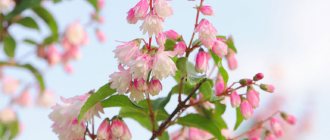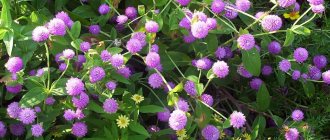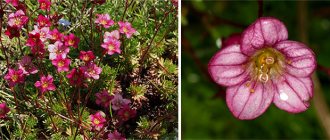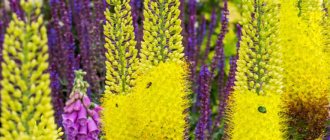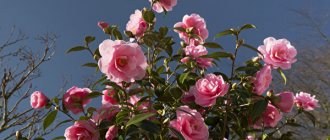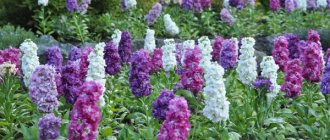Heuchera is a genus of herbaceous perennials of the Saxifraga family. The culture is named after Heinrich von Heicher, a German physician and biologist. The origin of heuchera is the rocky slopes of North America. These are low shrubs that attract attention with the variety of colors of decorative leaves.
Heuchera became a decoration for gardens and private plots not very long ago. Today it is actively used in landscape design. There are very few ornamental crops that have such a palette of shades and as many combination options as heuchera. Growing this crop is not difficult. If you provide proper care for the site, you can admire the lush foliage until the cold weather.
Types and varieties of heuchera for open ground
Heucheras can be divided into mountain and forest ones. They are decorative-flowering and decorative-deciduous. The genus includes about 70 species, on the basis of which more than 400 varieties have already been bred. At the moment, several varieties of heuchera are popular for cultivation in open ground.
Blood red (sanguinea)
A mountain species with dense green leaves and red flowers. Most hybrid varieties come from it. The shape of the leaves of the blood-red heuchera is rounded, the ends are serrated. Some varieties have cream or white specks on the leaves. The plant is popular in mid-latitudes due to its cold resistance.
Hairy (villosa)
Characterized by large, velvety triangular foliage. The leaves are about 20 cm long and can change color from green to bronze during the growing season. Peduncles are pubescent, with white, pink or creamy green flowers.
Cylindrical
A tall mountain species up to 0.9 m long. The leaves are green, round-heart-shaped with a silvery pattern. The flower stalks are about 1 m high and bear white, pink or creamy-green flowers, collected in the form of a cylinder.
Popular varieties:
- Greenfinch,
- Hyperion.
Small-flowered (micrantha)
It has wedge-shaped leaves, shaped like maple leaves. On top they are covered with silvery spots. The inflorescences are paniculate, bloom on tall peduncles. The flowers are small, beige-pink with orange anthers. They bloom in late spring and bloom for about 2 months.
American
It is also called mountain geranium. The leaf blades are heart-shaped, forming a rosette 20 cm high. Their surface is brownish-purple. Peduncles reach a length of 0.5 m. Yellow-green flowers bloom on them, forming panicles.
Hybrid
An interspecific hybrid, which was obtained by crossing American, blood-red and small-flowered heuchera. The leaves are predominantly green, with contrasting veins. White, coral, pink or red flowers bloom on tall peduncles. Flowering lasts about 2 months.
Popular varieties:
- Cappuccino,
- Cancan,
- Ruby Vale.
3.Varieties:
3.1. Heuchera marmalade
Decorative foliage plant with a height of 25 to 45 cm. The leaf blades are distinguished by elegant corrugated edges. Leaf shades include light green, orange, coral, and pink. During the summer months, the plant produces thin, erect flower stalks with small burgundy flowers. Young shoots of plants have delicate pubescence.
↑ Up,
3.2. Heuchera bloody red - Heuchera sanguinea
The plant can be safely classified as both flowering and decorative foliage. The relatively tall bushes reach a height of 30 - 45 cm. The leaves are light green, on long, thin basal petioles. The leaf petioles and peduncles are covered with attractive pubescence. Each plant can throw out up to several dozen erect, thin peduncles bearing bright burgundy, red, and crimson flowers at the tops. The flowering period begins in May and lasts until July. The flowers have a pleasant sweetish aroma.
↑ Up,
3.3.Heuchera Caramel
A compact, perennial, decorative foliage plant with a height of 20 to 45 cm. In warm climates, the plants remain evergreen, but with the onset of frost, the above-ground part may die off. The leaves are rounded, on high basal petioles. An interesting feature of the variety is that in spring the young leaves are colored reddish, and in the summer months the leaf blades acquire a golden-yellow color.
↑ Up,
3.4. Heuchera Peach Flambe
Plants of this variety have a very bright, attractive appearance. The height of the bushes is 30 - 40 cm. The leaves are rounded, palmately cut, on high, thin petioles. The leaf blades are colored in a catchy coral, red, burgundy shade. The peduncles are numerous, erect, bearing very small, delicate, white or pink flowers at the tops.
↑ Up,
3.5. Small-flowered heuchera - Heuchera micrantha
Small-flowered heuchera is a tall herbaceous perennial plant with glossy, basal leaves on very long petioles. Thin, vertical flower stalks can reach 1 meter in height. The leaf blades are green, purple or reddish in color. The flowers are very small, pink or white.
↑ Up,
3.6.Heuchera micrantha Palace Purple
Attractive herbaceous perennials that form large, rounded bushes. The height of the plant reaches 30 - 60 cm. The leaves are rounded, on long, thin, basal petioles. The leaf blades are glossy, dark violet or purple. The peduncles are thin, numerous, erect, bearing inflorescences at the tops - loose panicles with very small pink or white flowers. An interesting feature of the variety is that with the onset of hot summer weather, the color of the leaves may change to green.
↑ Up,
3.7.Heuchera Midnight Rose Select
Valuable decorative foliage plants with a very impressive appearance and compact dimensions. Even adult plants reach a height of only 20 - 30 cm. The rounded, palmately cut leaf blades of this plant are painted in a dark purple or burgundy shade with small pink specks on the surface.
↑ Up,
3.8. Heuchera Lime Rickey
Decorative leafy perennials with a very delicate appearance. The rounded, corrugated leaves, as well as the leaf petioles and peduncles, are painted in a delicate light green shade. During the flowering period, each bush throws out vertical, thin, pubescent peduncles, reaching 25 - 45 cm in height. The flowers are small, white, and have a pleasant aroma.
↑ Up,
3.9. Heuchera hybrid Obsidian - Heuchera hibrida Obsidian
Compact ground cover plants up to 25 cm high. This species is considered the darkest variety of heuchera. The leaves are round, with large teeth along the edges, on long basal petioles. The leaf blades are glossy, almost black, painted in a dark burgundy or dark purple hue. Tall erect peduncles bear small white or cream flowers at the tops, collected in loose panicles.
↑ Up,
3.10.Heuchera brizoides
A perennial plant from 30 to 60 cm in height with attractive leaves and colorful flowers. The leaf blades are glossy, painted bright green, have a rounded shape and large teeth along the edges. The peduncles are tall, erect, covered with attractive pubescence, bearing small pink or coral, bell-shaped flowers at the tops.
↑ Up,
Growing from seeds to seedlings
If you grow heuchera from seeds, it is better to do it in seedlings. The seeds remain viable for six months after collection. If you store them in foil, the shelf life can be extended to 1.5 years. Heuchera seeds do not require stratification, so they can be sown for seedlings in March.
Soil and container
For planting, it is better to choose wide containers with holes in the bottom for good drainage. Their height should not be less than 5 cm. Plastic cups or peat pots and containers are suitable. They need to be filled with an earthen-peat mixture. You can take a universal soil and add sand or perlite to it for looseness. Pre-treat the soil with a fungicide or potassium permanganate solution for disinfection. Allow the soil to dry slightly before sowing.
Heuchera seeds are very small; to obtain more uniform germination, it is recommended to mix them with sand. Scatter them over the surface of the moistened soil; do not deepen them. Cover the crops with film or glass on top and transfer to a warm place.
Seedling care
If good conditions are provided, seedlings will appear in 2-3 weeks. To germinate heuchera, you need good lighting, a temperature of +20-22 degrees. Protect seedlings from drafts. From time to time, open the container with crops for ventilation. When the sprouts appear, the cover is not removed at all, but only raised, and holes can be made in the film. After 3 true leaves have grown, the seedlings are planted in separate containers. It is important to keep the soil constantly moist, but not to flood it.
In mid-May, seedlings need to be gradually accustomed to fresh air. It is taken out to a shaded place for a while. After the plants are well established, they are planted directly in pots in open soil.
Transplanting
Heuchera can be planted outside when warm weather finally sets in and the soil warms up. It is best to do this in May. Before planting, it is recommended to loosen the soil and add coarse river sand to it. Plant the seedlings together with peat pots in pre-prepared holes, maintaining intervals of 20-25 cm. A layer of drainage is poured onto the bottom of the holes.
How to propagate a plant
Growing any ornamental crop should include periodic rejuvenation of the bush. For heuchera, this period occurs after 4 years of growth, when a bare rosette appears in the middle of the bush. The division of the bush is carried out according to the following rules:
- Divide the bush in late spring or early summer.
- Each new seedling must have at least 3 rosettes.
- Excessively long roots are shortened, all affected parts are removed, and the cut areas are treated with charcoal.
New bushes are planted in fairly deep holes with a good drainage layer at the bottom. The seedlings are watered abundantly and then mulched. For high-quality rooting, a minimum of 30 days is required.
There is a second propagation method - cuttings. In mid-summer, new cuttings are cut from the mother plant, the length of which should reach 6 cm. The lower ends of the cuttings are dipped in any growth stimulator. All leaves are removed from the daughter sprout, and then the cutting is dipped into a mixture of sand and peat.
Containers with new sprouts are placed in a shaded, warm place. As they take root, the seedlings are regularly ventilated and watered with settled water. With proper organization of care, rooting occurs in 20-28 days.
In practice, the third propagation method is used - growing from seeds:
- It is better to purchase heuchera seeds from a trusted garden center.
- Planting material is planted in early spring in prepared (pre-disinfected) plastic containers of sufficient size.
- An alternative option is to use wooden boxes for planting seeds.
- The highest quality substrate for planting is considered to be soil that contains peat, turf soil, and river sand. Wood ash or dolomite flour is used as a valuable source of potassium.
- The prepared soil is also subjected to preliminary disinfection with boiling water or heating in the oven.
- The seeds are evenly distributed over the surface of the soil, sprinkling the material with a thin layer of sand. Fresh plantings are moistened with a spray bottle, and the container itself is covered with plastic film.
Planting seeds in open ground
You don’t have to waste time growing seedlings, but sow the seeds directly into open ground. But you need to take into account that the plant will not retain all its maternal characteristics. And instead of the desired lush shrub with colorful foliage, you can grow a completely different plant, devoid of decorativeness.
Sowing time
Heuchera can be sowed in March-April. If there is a threat of frost, it is better to cover the area with agrofibre. In some cases, planting in the fall is allowed, immediately after collecting the seeds. But this is only possible in those regions where autumn is warm and cold weather comes late. Before winter, shoots will appear and the plant will be able to overwinter under cover.
Choice of location and lighting
Heuchera prefers shaded areas.
It is recommended to plant it on the eastern or western side of the site, near spreading trees. Many varieties can grow in sunny areas. But in such cases, regular watering is important. Red-leaved heucheras need good lighting most of all. Under the influence of the sun they acquire a characteristic red color. If they are planted in the shade, the foliage may turn green. On a note! The plant has no special requirements for the soil on the site. Heuchera can grow anywhere, but not in acidic soil. Optimal pH 5-6. Rocky soil is also suitable. The more nutritious and loose it is, the more magnificent the bush will be. It is undesirable to plant the plant in lowlands where there may be stagnant water. This has a bad effect on the condition of the root system.
Landing rules
Prepare the soil on the site in advance - dig up, remove all weeds, apply fertilizer. Mix the seeds with sand and sow in the prepared furrows. When shoots with 3-4 true leaves appear, they are planted at a distance of 20-25 cm from each other.
Choosing a place and soil for planting
Heuchera grows well in fertile, loose soils with neutral acidity pH 5.5–6.5. Water should not stagnate in the soil, otherwise the rhizomes will quickly begin to rot. To drain excess moisture, deep drainage is arranged in the planting areas.
Sites for heuchera are chosen so that the plants are well lit in the first half of the day. In the sun the leaves become brighter. Some varieties prefer partial shade or shaded areas. Heuchera is often planted in the garden in the trunks of fruit trees and shrubs.
Outdoor care
Heuchera does not require special care. It is very important to provide it with proper lighting, good drainage, and timely watering.
Mulching the soil
The root system of the plant is located on the surface. To avoid drying out, it is recommended to mulch the soil around the bush with dry leaves, straw, and sawdust. Mulch will promote slow evaporation of moisture and maintain looseness of the soil.
Watering
Heuchera needs to be watered regularly in spring and summer. If the bush experiences a lack of moisture, the leaves will begin to dry out and lose their decorative properties. If there is no rain, then it is advisable to water the plant once every 2 days. You need to let the top layer of soil dry out a little. Watering is carried out in the morning or evening, when there is no scorching sun. But the plant cannot be flooded; it does not tolerate stagnation of water. You need to pour water at the root, avoid getting it on the leaves. Drops of water exposed to the sun can cause leaf burns.
Feeding and fertilizer
In the wild, heuchera grows in poor soils. Therefore, non-ornamental species can be grown without fertilizing. Varietal heucheras need fertilizer to produce lush bushes and colorful leaves. In the spring, a year after planting, it is recommended to apply complex fertilizing. The fertilizer concentration is made 2 times weaker than the instructions require.
Care during and after flowering
Heuchera usually blooms in early summer. Depending on the variety, flowers can decorate the plant throughout the summer until cold weather. Flowers in the form of bells are collected in paniculate inflorescences, located on high peduncles. It is recommended to remove faded buds immediately. Leave only the inflorescences from which you plan to collect seeds. The seeds are collected in boxes. 1 g contains up to 20 thousand seeds.
Requirements for soil composition
Representatives of the Saxifraga family do not tolerate acidic soils, preferring soil with an acidity level in the range of 5-6 units. An excellent solution would be to plant heuchera on rocky surfaces, but in this case the foliage on the bush will not have a pronounced volume.
The best option would be to plant shrubs on loose alkaline soil with a sufficient content of mineral and organic fertilizers. It is also important to pre-organize a drainage layer, which will contribute to the uniform distribution of moisture in the soil.
Excessive watering and stagnation of liquid will inevitably lead to hypothermia of the roots and the development of a number of diseases.
Protection from pests and diseases
Heuchera is quite resistant to external factors. If there is excess moisture due to rainy weather or heavy watering, it can be affected by rust, powdery mildew, and root rot. Fungicides are used to combat rot and powdery mildew. All damaged parts of the plant are first removed. Spraying with Bordeaux mixture is effective against rust.
The root system and leaves may be threatened by:
- nematodes;
- weevils;
- slugs
To prevent infection around the bush, it is recommended to sprinkle slaked lime or sawdust with creolin. To combat weevils, spray with mustard water. If the heuchera is severely damaged by pests, it is better to use insecticides (Aktellik, Karbofos).
Botanical description of Heuchera
Heuchera is a perennial herbaceous plant from the Saxifraga family. Its homeland is North America, where the plant grows in inaccessible, rocky places.
Heuchera bush is low and quite compact. It grows to a maximum of 0.5 meters. The leaves are long-petiolate, leathery, with a serrated edge. The shape, color, and texture of the leaf blades depend on the type (variety) of the plant. The color palette ranges from black to silver; on the surface of the leaves there are numerous veins, specks, spots, and unusual patterns. The leaves are smooth, corrugated, curly.
Flowering in Heuchera lasts quite a long time - almost all summer, and under favorable conditions - until frost. The flowers are quite small and bell-shaped. They come in white, pink, cream, greenish or red. The flowers are collected in paniculate inflorescences.
The fruit is a capsule containing a large number of small seeds (up to 20 thousand).
Reproduction methods
In addition to sowing seeds, other methods of propagating crops are used.
Cuttings
Cut off the side shoots with a fragment of the rosette. Long cuttings can be cut into shorter ones. Treat the cut areas with Kornevin. Plant them in holes filled with loose peat. Cover the cuttings with film on top. Open it periodically for ventilation. The plant should take root within a month. If rooting occurs closer to autumn, then the plant is left in a greenhouse for the winter.
Dividing the bush
This method is used most often. It is the most effective, retaining all the characteristics of the mother plant. It is better to divide the bush during the 3-4th year of the heuchera’s life during spring or autumn replanting. Carefully dig up the bush and divide it into sections without using sharp tools. Each should have 2-3 sockets. Remove damaged and dry areas. Treat the cut areas with Kornevin or ash. Dig holes, fill them with compost, add drainage. Plant the cuttings and water them. Within 1.5-2 months they will take root.
Features of growing heuchera
Location
Heucheras are unpretentious plants. The required minimum conditions for their cultivation are universal for all varieties: deep drainage, dappled shade, moisture-intensive soil, mandatory hilling once a year or every other year. Planting along the periphery of the crown of an apple tree or around bushes provides shading and cover with leaves for the winter.
Heucheras are quite labile (unstable) in relation to temperature and light intensity. Different varieties can very significantly change the color of leaves, timing and intensity of flowering under different temperature and light conditions, so you can only determine the optimal conditions for your pets experimentally.
Most heucheras prefer direct sunlight only in the morning.
Heuchera flowers are blood red. © Prescott Park
The soil
The plant is undemanding, but prefers light, well-fertilized soil cultivated to a depth of 20 cm. Compost or humus soil is added to poor soils at the rate of 10 kg/m2. In damp areas and when water stagnates, the fleshy rhizomes rot and the plants die.
Since most heucheras live in the mountains, they prefer good drainage in gardens. To ensure water and breathability of the soil, it is recommended to add coarse river sand or fine gravel, especially around the rosette of leaves. Coarse compost or crushed bark should also be added to the soil. Heucheras, as rocky site plants, can tolerate an alkaline pH of up to 8.5, but Hames writes that they are only happy when the soil pH is between 5.8 and 6.3.
Autumn care and wintering
Heuchera does not require special care. In autumn, after flowering has ended, the flower stalks must be removed. Dry stems and leaves should not be cut. They are necessary to cover the root system during wintering. The plant may not tolerate severe frosts. Therefore, for the winter it is additionally covered with dry leaves and straw. The soil around is mulched with tree bark and ash. In the spring, when warm weather sets in, the cover is removed and the stems are carefully cut as close to the soil surface as possible.
Heuchera after flowering
Most often, heuchera blooms in the first weeks of summer, and the flowering period is approximately 8 weeks (in some cases longer). Faded bushes do not require any special care. Simply remove the flower stalks, but only if you do not intend to collect the seeds.
Wintering
The crop overwinters quite well in open ground. In autumn, it is impossible to cut yellowed and dried leaf plates from the bush, as they protect the root system from freezing in winter. The plant needs to be covered for the winter, and it is recommended to use fallen oak foliage as a cover. With the onset of spring, the shelter is removed, and the old foliage from the bush is carefully cut off with pruning shears as close to the surface of the area as possible.
Heuchera in landscape design
The main advantage of heuchera is its decorative effect throughout the growing season. This allows it to be widely used in landscape design. A flower garden made from a composition of different varieties of heuchera looks impressive.
The contrasting leaves of heuchera also go well with other plants:
- ferns;
- bought;
- irises;
- barberries;
- daylilies.
The culture complements coniferous plantings well and is suitable for decorating alpine slides, borders, decorating gazebos, slides, and fountains. In spring it can be placed next to tulips. After they bloom, the heuchera will fill the space of the flowerbed. The decorative value of a crop can be fully appreciated only in the 2nd year of life. A newly planted bush does not yet show all its advantages.
Heuchera is an exotic crop that is increasingly popular among gardeners due to its unpretentiousness and colorfulness. You can grow different types of plants from seeds, by cuttings or dividing the bush. Heuchera goes well with other ornamental crops and becomes an integral part of flower arrangements.
More useful information about caring for heuchera in open ground and about the features of growing an ornamental plant that is beautiful from spring to autumn can be found after watching the video:
Fertilizer application
Such an ornamental crop requires moderate feeding. In the first year after planting the bush, fertilizers are not applied to the soil. As the bush grows, fertilizing is carried out twice a season (before flowering and after the inflorescences wither).
The composition of complex fertilizers depends on the type of ornamental crop on the site (deciduous or ornamental flowering plants).
Heuchera is propagated by dividing the bush.
Heuchera, planted and cared for correctly, loses its aesthetics every 3-5 years. In this case, the plant can be replanted. It is preferable to do this before or after flowering. For example, in the spring after new leaves appear or in the fall, when the plant finishes blooming.
It is preferable to replant heuchera before or after flowering.
To replant, the heuchera is carefully dug up and divided into several small bushes to expose the main stem. It is trimmed to young tissue. Dead shoots should be pruned to small living small buds. They are located in the axils of dead old leaves. After this, it is necessary to shorten the excessively overgrown roots and remove their rotten areas, leaving only healthy tissue. All cuts are sprinkled with crushed coal.
After transplantation, the plant must be protected from excessive sun.
For planting, you need to choose a shaded place and dig holes measuring 30x30 cm. Ash and any mineral or compost fertilizer are poured into them. Then a plant is planted, which must be watered immediately. The growth of a new root system usually occurs within 40-45 days. All this time, the plant must be covered from excessive sun. Then the heuchera can be transplanted to its permanent place.
Heuchera reproduces well by seeds


